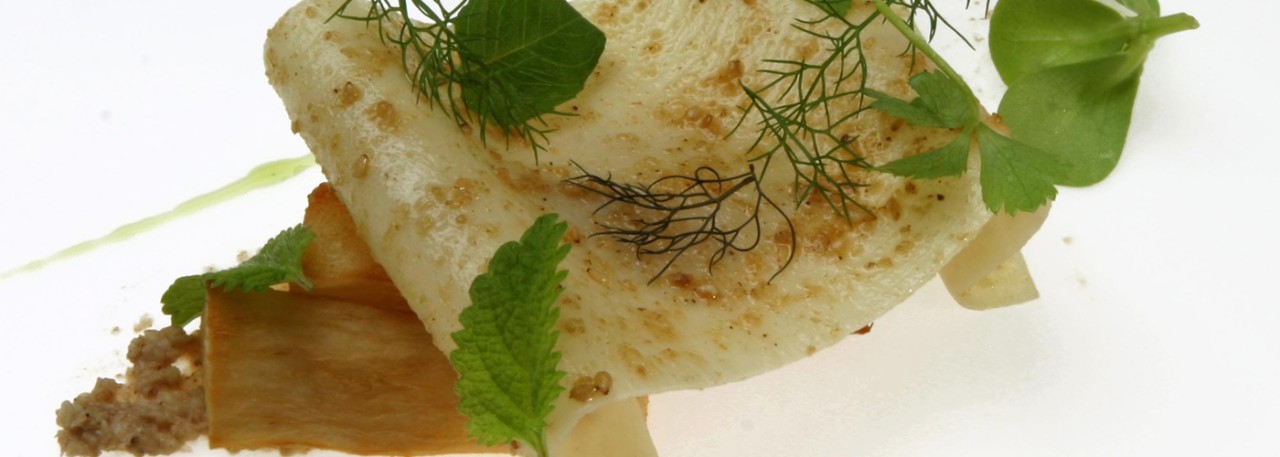White, José Pariente 2004, DO Rueda
.png.transform/rendition-xs/image_image%20(1).png)
Peel the cassava and cut into four. Remove the brown fibrous part from the center. Place the cassava pieces in the stock in a pan and bring to the boil. Boil for a minimum of 30 minutes to open up the cassava fibers. Remove from the stock and place on a dish for an hour so that all the stock drains out. Then place each piece in a vacuum pack together with the truffle emulsion. Close the pack but without too much pressure. Do all this one day before the dish is to be served.
Pulse stock
Carefully wash all the vegetables, cut into pieces and place in a pan with the other ingredients. Bring to the boil, then simmer over a very low heat for 5 hours.
Alocasia flakes
Peel the alocasia, place on the slicer and cut into flakes measuring 10 cm / 4” wide and 20 cm / 8” long. Place 1 liter / 4 1/4 cups / 1 3/4 pt pulse stock in a pan and bring to the boil. Dip the alocasia flakes into it for approximately 15 seconds to precipitate the starch. This makes them sticky to the touch. Place the flakes between two sheets of transparent paper.
Truffle emulsion
Place all three ingredients together in a squeezer bottle. Shake vigorously and refrigerate.
Pistou
Carefully wash the parsley leaves, and place in the blender with the oil, garlic and salt. Blend at maximum power for about 10 minutes. Pour the mixture into a strainer placed over a bowl and leave to strain for one hour. Refrigerate.
Herbs
Pick the herbs and wash in plenty of cold water. Dry well and place between two damp cloths. Refrigerate.

Place two alocasia flakes on a dish and soak them with the truffle emulsion and olive oil. Remove the piece of cooked cassava from the vacuum pack and dry on absorbent paper. Place an alocasia flake on a plate, crinkling it to make an uneven base and top with the piece of cassava. Top this, concealing it only partially, with another crinkled alocasia flake. Finish with the aniseed-flavored leaves, then the pistou and the herbs. Sprinkle with the truffle emulsion.
Chef's Remark:
“One of our obsessions has been to include more vegetables on our menus and to avoid the focus on proteins which have always been at the heart of haute cuisine. One experiment has been to work on starches which, on the palate, may be reminiscent of protein foods. If we add a fatty touch, the sensation comes even closer to the foods we are trying to substitute.”
Preparation by: Andoni Luis Aduriz
White, José Pariente 2004, DO Rueda